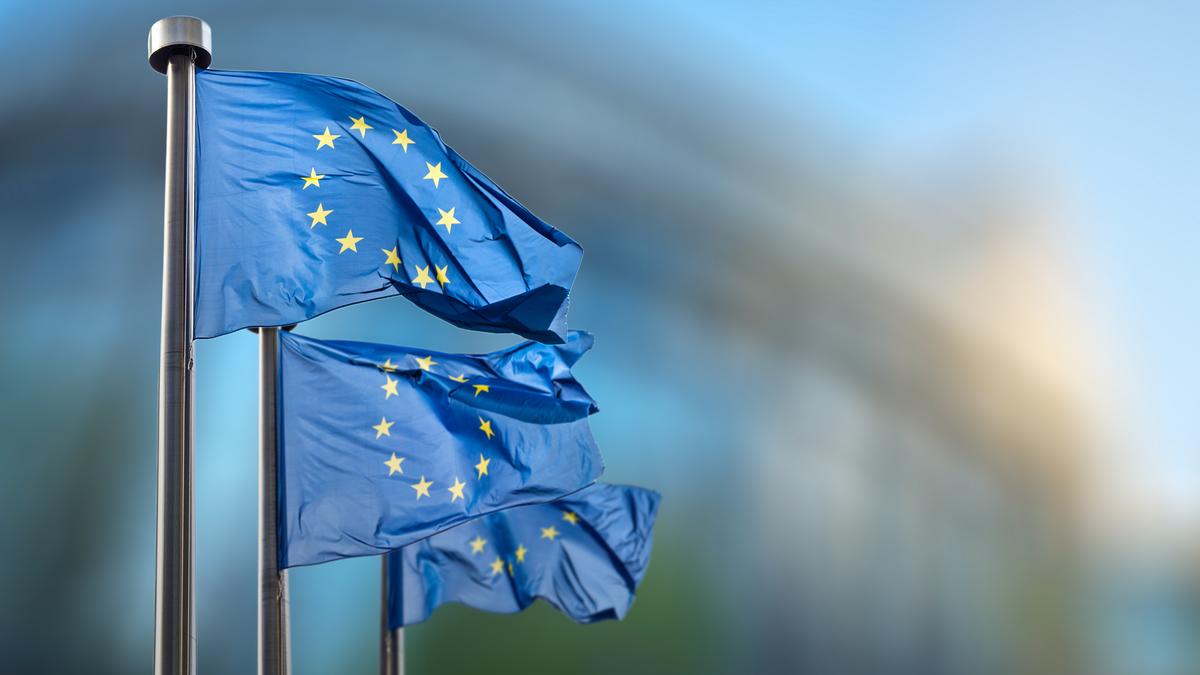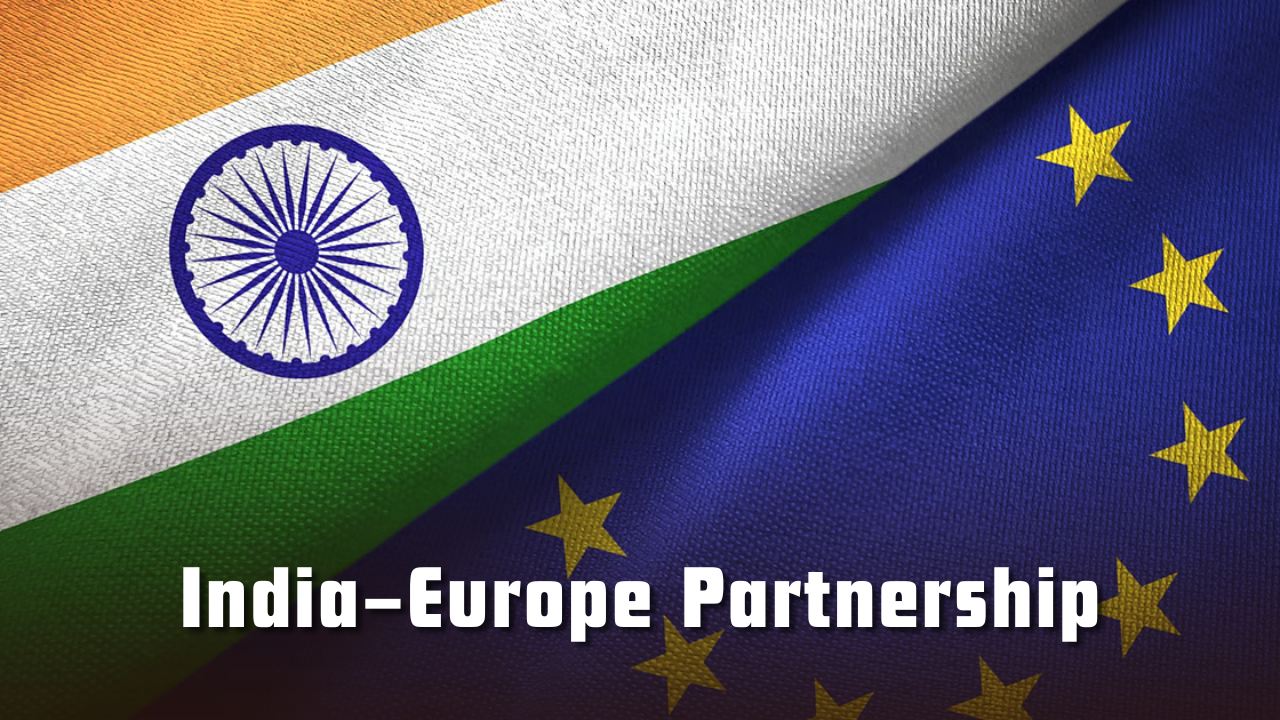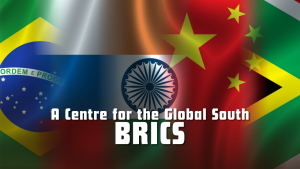India–Europe Partnership in a Multipolar World: A Strategic Vision
Explore how India and Europe can align across defence, tech, trade, and values to build a democratic coalition in a changing global order.

Introduction
In a world characterised by fracturing alliances and emerging centres of power, Shashi Tharoor’s thesis—that India and Europe must “walk in step” (“The Importance of India and Europe Walking in Step,” The Hindu, July 15, 2025)—provides both prophecy and prescription. His clear call for strategic alignment, grounded in shared values, economic interdependence, and institutional collaboration, is more than mere rhetoric. Instead, it offers a coherent roadmap for two democracies seeking influence and stability in an increasingly multipolar global order. This essay examines Tharoor’s argument across nine key dimensions—strategic intent, institutions, economics, technology, security, mobility, multilateralism, risks, and culture.
Strategic Autonomy as Shared Imperative
Europe’s turn towards open strategic autonomy is visible in its desire to act independently where necessary, while continuing to cooperate multilaterally. India, similarly, has shifted from traditional non‑alignment to a more flexible multi‑alignment strategy in foreign relations. A Carnegie Endowment study finds that “India and Europe share the vision of a democratic, multi‑cultural, multipolar world,” yet both have been slow in translating this into action. Furthermore, the German Marshall Fund notes that India is moving steadily closer to the West, while maintaining its strategic autonomy. The central thesis of Tharoor (2025)—that India and Europe must synchronise—rests precisely upon this shared urge for strategic agency. Their alignment represents more than coincidence; it is a deliberate joint pursuit of global influence and autonomy.
Institutional Infrastructure: From Dialogue to Delivery
The India–EU Strategic Partnership, established in 2004, led to frameworks such as the 2008 Joint Action Plan and the 2025 Roadmap. However, analysts point to a persistent gap between dialogue and enforceable mechanisms. Tharoor (2025) emphasises the need to replace passive conversation with active collaboration—through binding trade deals, mobility agreements, and defence-technology pacts. The 2025 EU–India Science & Technology agreement under Horizon Europe represents progress but still falls short of institutional robustness. European scholars conceptualise strategic autonomy not merely as self-reliance, but as the cultivation of alliances with democracies like India. Conversely, India faces the challenge of converting rhetorical solidarity into concrete commitments. Tharoor’s demand is simple: the two regions should evolve from mere discussion forums into durable policy unions.
Economic Synergy: Growth with Equity
India–EU economic ties have strengthened considerably: EU foreign direct investment in India rose by 70 %, French investment by 373 %, and European imports from India doubled between 2015 and 2022. Yet this growth, Tharoor warns, could falter without a fast-tracked Trade & Investment Agreement that prioritises sustainability and fairness. Scholar commentary indicates that Europe’s Carbon Border Adjustment Mechanism must be carefully calibrated to avoid penalising developing economies such as India. This key tension—balancing economic synergy with justice—is central to the broader vision for equitable collaboration. Analysts emphasise that a one-size-fits-all carbon levy risks undermining the legitimacy of the transition unless flexibility and support are provided to countries with emerging green capacities. A well‑designed deal would include sustainability clauses, low‑carbon technology transfers, and alignment with global environmental conventions.
Technology and Digital Governance: Strategic Keystone
Tharoor (2025) places technology at the centre of India–Europe collaboration. The January 2023 Clingendael Report recommends joint engagement in military technologies, semiconductors, batteries, AI, quantum computing, green hydrogen, and space systems. The report proposes a three-tier strategy: protect supply chains; promote co‑research; shape international standards and norms. India seeks to reduce its dependence on Russian defence technology, while Europe aims to diversify supply chains away from China — thereby creating shared incentives.
The establishment of a joint Trade & Technology Council would support semiconductor production in India, drone systems, quantum laboratories, green hydrogen ventures, and collaborative space missions. Academic commentary from Takshashila underscores that successful international partnerships require three elements: a convergence of interests, a broad alignment of values, and complementarity in strengths. These ideas validate the argument that technology serves as both an incentive and critical infrastructure for deeper cooperation. When technological ecosystems are constructed together, they yield mutual benefits, and the Trade & Technology Council becomes the crucial institutional vehicle.
Security, Defence and Counter‑Terrorism
Tharoor (2025) argues strongly for collaboration in defence production, maritime surveillance, cybersecurity, space, and counter-terrorism. The Clingendael Report highlights specific practical areas for joint work—such as co-production of drones, over‑the‑horizon missiles, naval electronics, aerospace composites, and quantum systems. It suggests avenues for Indian firms and European firms (like Airbus, Saab, and Fincantieri) to build institutional ties. Yet regulatory alignment is essential: dual‑use export controls and procurement systems must be overhauled to allow cooperation.
Security cooperation increasingly features in EU Indo-Pacific strategy documents—a sign of both conceptual alignment and growing political commitment. This emphasis on trust-building through shared technological and doctrinal platforms is well supported by security analysts and official policy frameworks. His overarching message is clear: without regulatory reform and policy coherence, strategic ambition cannot manifest in reality.
Human Mobility: Cultural and Intellectual Lifeblood
Tharoor (2025) stresses the importance of human connectivity—through students, scientists, entrepreneurs, and artists—to sustain lasting strategic ties. Though less quantifiable, experts from Clingendael and EU science evaluations recognise mobility programmes, joint degrees, and shared research positions as the essential matrices of trust. These initiatives personalise relationships, foster mutual empathy, and create enduring professional networks.
Practically, this means expanding Erasmus‑style scholarships to include India, creating visa corridors for environmental and tech professionals, developing co‑funded research chairs across Indian and European universities, and funding cultural exchanges. These bridges socialise strategic cooperation into the DNA of both societies, ensuring interpersonal bonds complement institutional ones. This insight aligns with scholarly consensus suggesting that durable partnerships emerge from integrated and inclusive ecosystems .
Multilateral Norm Leadership
Tharoor (2025) maintains that India and Europe must jointly shape global governance in institutions such as the UN, WTO, Quad, and AI regulatory bodies. Clingendael suggests pairing trade‑tech partnerships with export-control policy and digital rights advocacy to spearhead international leadership. India’s 2023 G‑20 presidency and Europe’s Global Gateway initiative are strategic openings for coordinated norm setting.
By synchronising peer‑review platforms, export standards, capacity‑building partnerships, and digital regulation, India and Europe can champion global public goods and democratic norms. This approach extends beyond bilateralism into pluralist global engagement, envisioning a collaborative architecture for democratic order.
Risks, Caveats, and Political Will
Tharoor (2025) is mindful of the complications. Europe’s fragmented export-control regime, varying national fiscal rules, and differing outlooks on green policy pose hurdles. India’s regulatory opacity, concern over digital rights, and the potential fallout from carbon tariffs add complexity. These challenges necessitate political courage, regulatory reciprocity, and coordinated efforts across EU capitals and Indian ministries. Media narratives should also shift to reflect mutual respect and shared priorities.
Without ambition, bureaucracy becomes inertia. However, with the right political will and pragmatic leadership, both partners can realise the vision of a strategic coalition rooted in conviction.
Narrative Diplomacy and Public Imagination
Finally, Tharoor (2025) emphasises the role of public perception. Diplomatic summits—such as the Raisina Dialogue in Marseille or Ursula von der Leyen’s visit to Delhi—generate headlines, but lasting impact depends on follow-through in education, media, culture, and public discourse. Think-tank research (from Takshashila and Carnegie) reinforces this: public diplomacy is not decorative; it is foundational to resilient partnerships.
To humanise strategic alliances, narrative diplomacy through books, films, youth exchanges, and cultural journalism is essential. Only then can policy corridors extend into public hearts and minds, anchoring the partnership in lived experience.
Conclusion: From Strategy to Coalition of Conviction
The thesis—that India and Europe must walk in step—coheres into a strategic vision when grounded in institutional clarity, economic fairness, technological partnership, defence alignment, human exchange, normative depth, and cultural resonance. Contemporary scholarship—from Clingendael, Carnegie, GMF, Takshashila, and EU policy documents—reinforces each component of this argument. The consensus is clear: democracies such as India and Europe must pool their agency to secure global stability in an age of fragmentation.
Realising this ambition demands courage: binding agreements, regulatory synchrony, and sustained narrative momentum. If these are achieved, India and Europe will no longer represent ad hoc cooperation, but rather a coalition of conviction—a partnership driven not by convenience, but by shared purpose and democratic values in a multipolar era.
Subscribe to our Youtube Channel for more Valuable Content – TheStudyias
Download the App to Subscribe to our Courses – Thestudyias
The Source’s Authority and Ownership of the Article is Claimed By THE STUDY IAS BY MANIKANT SINGH



